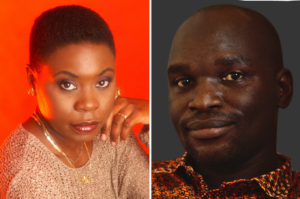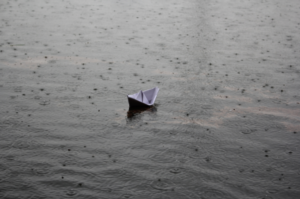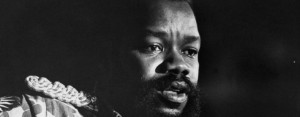
During my evening walks, I always pass through moments which seem more the stuff of photography than the written word. There are stories in street corners, in things that, without keen observation, would be judged mundane. A toy sticking out of a refuse bag beside the road had once kicked my imagination into a range of probabilities concerning its former life of utility, in which the toy had caused amusement to a particular child, and afterward left where I’d now seen it for what it really was: a purely disposable object. On another occasion, it was street names, fading on the walls of the storey buildings in my neighborhood. I’d imagined young men, eventually to grow old, going to the Local Government Secretariat to claim the streets still fallow. Streets in my neighborhood memorialize distant places and people—Isuochi, Orifite, Eze Iweka, Nwaegbeigwe—names which, by their presence there, have now become undying. Some of the things I notice are as dynamic as the passing of day. Some are fixed, always to be witnessed, like this old man sitting at the door of his dry-cleaning store, in the same clothes, with the same vacant stare at the street.
Over and over I have passed the old man, struggling to catch a flailing emotion, what his image in the door makes me feel. He has the consistency of a photograph—an unfailing faithfulness to the same clothes, gloomy expression, a brooding posture in a street that was always in flux—seeming to call back a past he is unable to shake off. This issue of his past, however hypothetical, has always taken me back to the street to look at him in the brief moment between approaching his store and passing it. On several visits, I have noticed, beyond him, other things which lie around in the way that things hardly used do. His ironing table standing beside the door, draped over with a piece of browning cloth, carrying washed clothes wrapped in transparent nylon bags. All over the store, behind him, are clothes hanging on a board and from hangers, clothes that appear to have been washed a long time ago. His laundering equipment is in front of his store: a plastic bath and bucket chipped around their rims, a stick caked from years of stirring clothes in hot water starch.
Whenever I pass in front of his store, I think of the word “idleness,” of the passage of time and how it could make a life once active stand still. It is conceivable, judging from the retired objects around him, that his hands were once busy, soaked in the plastic bath and the bucket in front of him, in an effort to deliver on the offers he had taken from people. But now, it seems, he has been caught off-guard in a moment he might not have made preparations for. With him, idleness feels like a state of being, something inactive yet pulsating, something that like every other state of being requires contemplation. It is this assumed commitment to contemplating idleness and my difficult attempt to dissect it that have astounded me each time I am faced with this aged man framed in the door of his store.
This idleness I encounter in this man has formed a pattern of observation in other things I have noticed during my walks: an observation of things that are of the present but with the uncanny remoteness of a spectral past. A few weeks after I first noticed the man, I entered an alley, passed through a narrow gate, and walked into the People’s Club complex. The air was at once privileged and primordial, and the guest houses had new roofing which did not fit their 20th century architecture. The colors of the building were already tarnished, a reminder of how long they had stood on that ground. But what reminded me of the aging of the complex was the event auditorium, once neat white, as I remembered from childhood, but now creaming. Looking at the auditorium, one could say that the designer had a preference for width over height. The height of the frame could barely be considered average for a building that large, with a roof like linking circles branching off the frame and spreading like mighty wings over the building, giving the pillars on the terrace pointed significance. A sense of the interior—cavernous, shadowed, and cold—could be felt looking at the building from the outside. But looking deeper, beyond its structure, into its present existence, there was a sense of something greater over the entire ground.
There was sparse life around the complex. Two sets of players were in the lawn tennis court, playing on different lawns and in the warm light of the evening; with their indulgent paunches and slow runs, they appeared to be enjoying a bourgeoisie privilege rather than playing a sport. All over the place were slow movements, a serenity that caused a strange feeling, as if the place had lived in but not totally given over to the past, existing in the present as a dark memorial. The idleness of this place, clearly an agent of time, was more discernible than that of the old man, because the place had a known history of glory days. The complex, among the grand buildings in Onitsha, embodied the affluence of the men who created it. It once hosted a steady flow of events. As a child, I had witnessed the active days of this place, from one of the windows in the row of houses bordering its fence by the south, and now, recalling those moments, they felt almost foreboding, as if it was always clear that time would reach out and swipe that burst of life into comatose.
It was near dusk when I left the complex to see one more house before I turned home. The house was at the end of the busy Nwaziki Avenue, now a shadow in the darkness which had deepened. I could still make out the curtain (clinic blue during the day) behind the sliding window facing the road, a gap in the center of the curtain, and through the gap, darkness and the unknown. The signpost in front of the house read OASIS OF HOPE: FOR THE ELDERLY.
From where I stood across the road, I thought about the life of the occupants of the home, the walls sullen with the stories they held within them. The house was quiet and the quietude inhabited a space of its own, unaffected by the hub on the street. During the day, when people were out to work, and kids to school, the house would blend into the general serenity of the street, but on that evening, with the steady traffic on the road, I wondered what the occupants thought of active life beyond the wall, the memories that returned to them. I wondered whether they even listened at all, whether time and age had numbed their concern for things that might still provoke my imagination. We, they and I, exist in different times which do not overlap, theirs ahead of mine, being totally uncaring about what was happening behind it. I felt a heightened sense of individuality, being alone in a vastly shared space, which left an existential anxiety in me. Standing across the road and watching this house, the connection was clearest between the house, the old man, and the People’s Club complex: a triangle of time and aging.
In “Age, Actually,” Teju Cole quotes Simone de Beauvoir’s The Coming of Age:
When we look at the image of our own future provided by the old we do not believe it: an absurd inner voice whispers that that will never happen to us—when that happens it will no longer be ourselves that it happens to.
Being young and involved in living feels like being a step ahead of depreciation. But it is only a step ahead. Sometimes one experiences a brief reminder of the implacable character of time. To have observed the People’s Club complex, the Oasis of Hope home, and the old man at the door, all of which and whom have gone grey and sit unseen in the glare of people, is to have moved momentarily into the circumference of time, in which age is past, present, and future. It is to experience in my body the steady decline of man and the inanimate, what Cole calls “the inevitability of one’s radical diminishment.” This is the unfaithfulness of time to things that are living, even to the nonliving—to radically decline their preservation.
There would come a time when our muscles slacken, our skins creased, when we become grizzled, our passions dulled; these things happen to even objects. Living—reproduction, history, career, work, love, sex, religion, social interaction, activity—when compared to its own transformation in time is a process of forgetting. What is forgotten is not mortality but what happens at the circumference of time, before what has been living slips into nothingness. It is to be anesthetic of aging, to be conscious and yet unfeeling of what it means.
ABOUT THE WRITER
Ebenezer Agu is a poet and an essayist. He is editor-in-chief of 20.35 Africa: An Anthology of Contemporary Poetry and poetry editor at 14: Queer Art.








COMMENTS -
Reader Interactions